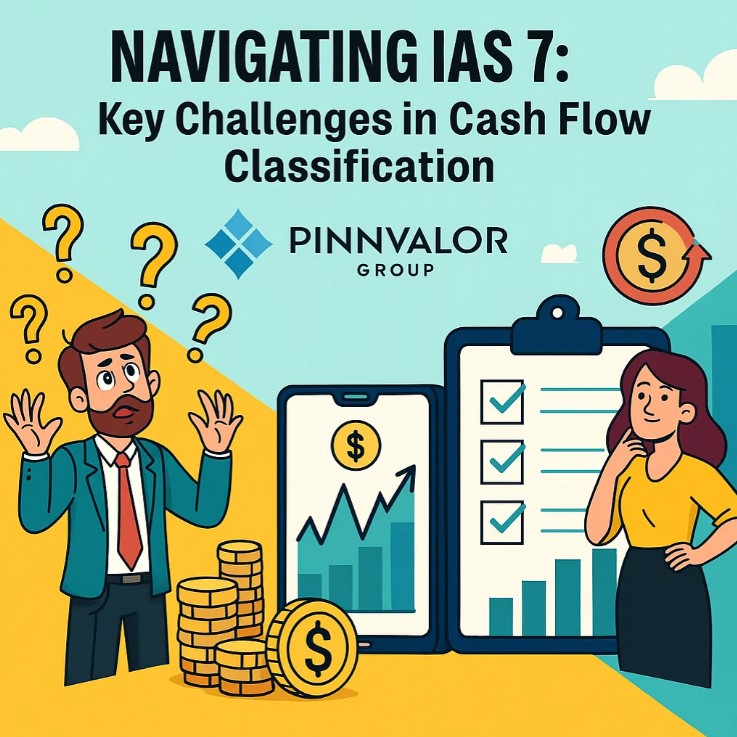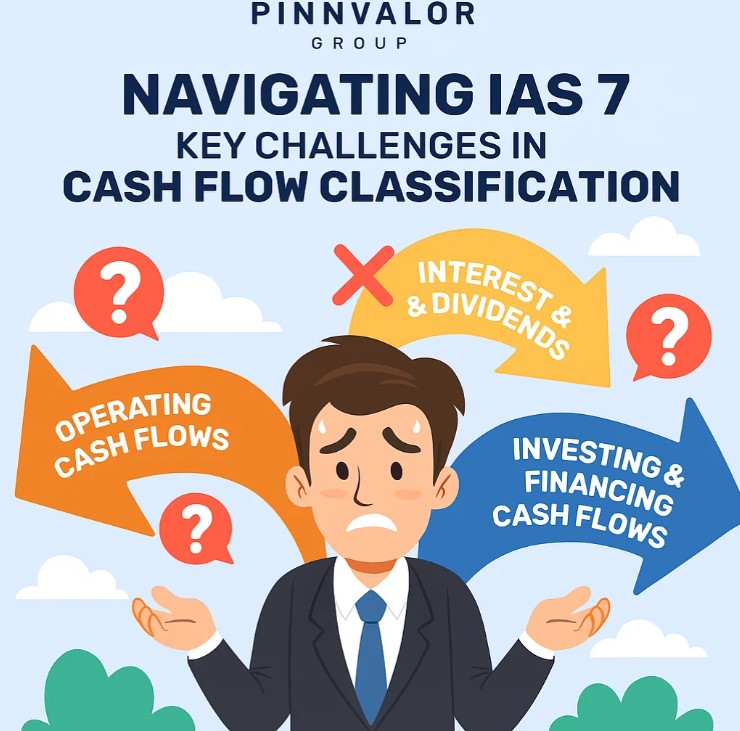
Navigating IAS 7: Key Challenges in Cash Flow Classification
IAS 7 — Statement of Cash Flows — plays a critical role in financial reporting by helping stakeholders understand how an entity generates and uses cash across operating, investing, and financing activities. While the standard may appear straightforward in theory, professionals frequently encounter grey areas and practical complications when classifying certain cash flows. Misclassification can distort key ratios and misinform decision-making, making it essential to grasp these nuances thoroughly.
Does your IAS 7 compliance reveal clarity — or confusion — in cash flow reporting?
Cash flows don’t lie — but misclassification under IAS 7 can distort the story. Clarity lies in judgment, not just rules.
Overview of IAS 7 Categories
- Operating Activities: Principal revenue-producing activities of the entity.
- Investing Activities: Acquisition and disposal of long-term assets and investments.
- Financing Activities: Changes in equity and borrowings.
Key Classification Challenges
1. Interest and Dividends: Operating, Investing, or Financing?
IAS 7 allows some flexibility in classifying interest paid, interest received, and dividends received, leading to inconsistent practice:
- Interest paid – often categorized as either operating or financing.
- Interest received and dividends received – either investing or operating.
- Dividends paid – usually financing, but can sometimes be operating.
This flexibility can reduce comparability across companies and industries. Developing a consistent policy is essential.
2. Taxes Paid: Always Operating?
Standard practice is to classify income taxes paid as operating activities. However, if a portion specifically relates to investing or financing transactions (e.g., tax on capital gains or loan settlement), it should be classified accordingly. Identifying and segregating such amounts creates a practical challenge for accountants.
3. Bank Overdrafts and Cash Equivalents
IAS 7 allows certain bank overdrafts to be treated as part of cash and cash equivalents if they are repayable on demand and form part of the entity’s cash management. This differs from overdrafts that are considered financing. Determining which overdrafts qualify for this treatment often requires judgment.
4. Non-Cash Transactions Disclosure
Significant non-cash transactions (like conversion of debt to equity, acquisition of assets through leasing, or issue of shares for asset purchases) are excluded from the statement of cash flows. However, they must be disclosed elsewhere. Entities often struggle with consistent and transparent disclosure of these items.
5. Changes in Working Capital
Adjusting profit for changes in working capital under the indirect method can be complex—especially when there are foreign currency differences or business combinations. Distinguishing movements due to operations versus reclassification adjustments can be tricky.

Additional Real-World Issues
- Classification of lease payments under IFRS 16: Some components (interest vs principal) belong to different sections.
- Government grants and subsidies: Sometimes treated as operating, but in some industries, they may be seen as financing.
- Proceeds from insurance claims: May relate to operating (inventory), investing (PPE), or even financing.
Best Practices for Professionals
- Establish a robust internal policy for classification and apply consistently.
- Refer to industry practice when judgment is required to ensure comparability.
- Provide clear disclosures explaining classification decisions when there is choice.
- Keep audit documentation showing rationale behind treatment of ambiguous items.
Conclusion
IAS 7 offers a strong framework for presenting cash flows, but its flexibility and reliance on judgment result in practical classification challenges. Finance professionals must look beyond the surface and analyze the substance of transactions to classify them correctly. Consistency, transparency, and disclosure are key to ensuring that cash flow statements truly reflect the economic reality of an entity.
